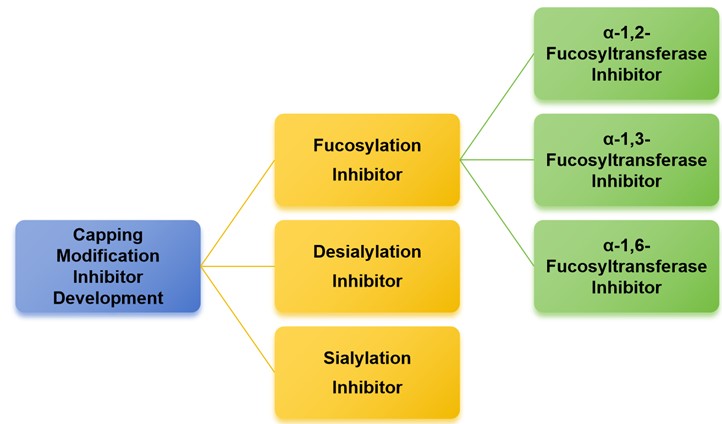


Two types of glycosylation are commonly considered "end-capping" modifications: fucosylation and sialylation. They are found in O-glycans, N-glycans, and glycolipids and are not further modified with other types of glycans. Based on their capping function as well as their unique structures, CD BioGlyco provides capping modification inhibitor development services.
We use a library of glycans as a starting point for high throughput screening for capping modification inhibitors. We screen the library for compounds with capping modification inhibitory effects. Examples include molecules that interfere with the fucosylation of glycans, which can interfere with the function of glycosyltransferases and thus have the effect of inhibiting fucosylation.
On the other hand, we offer the use of luciferase assay, RNA sequencing, and other techniques to test the potency of inhibitors. Cellular models are utilized to assess the selectivity of inhibitors.
 Fig.1 Development content of capping modification inhibitor. (CD BioGlyco)
Fig.1 Development content of capping modification inhibitor. (CD BioGlyco)
CD BioGlyco relies on professional researchers to provide our clients with high-quality Glycosylation Inhibitor Development Services. We provide our clients with different types of inhibitors according to different types of glycosylation reactions during the development of inhibitors. We have undergone quality testing at every step to ensure our clients' satisfaction. Please feel free to contact us for more detailed information.
Reference
